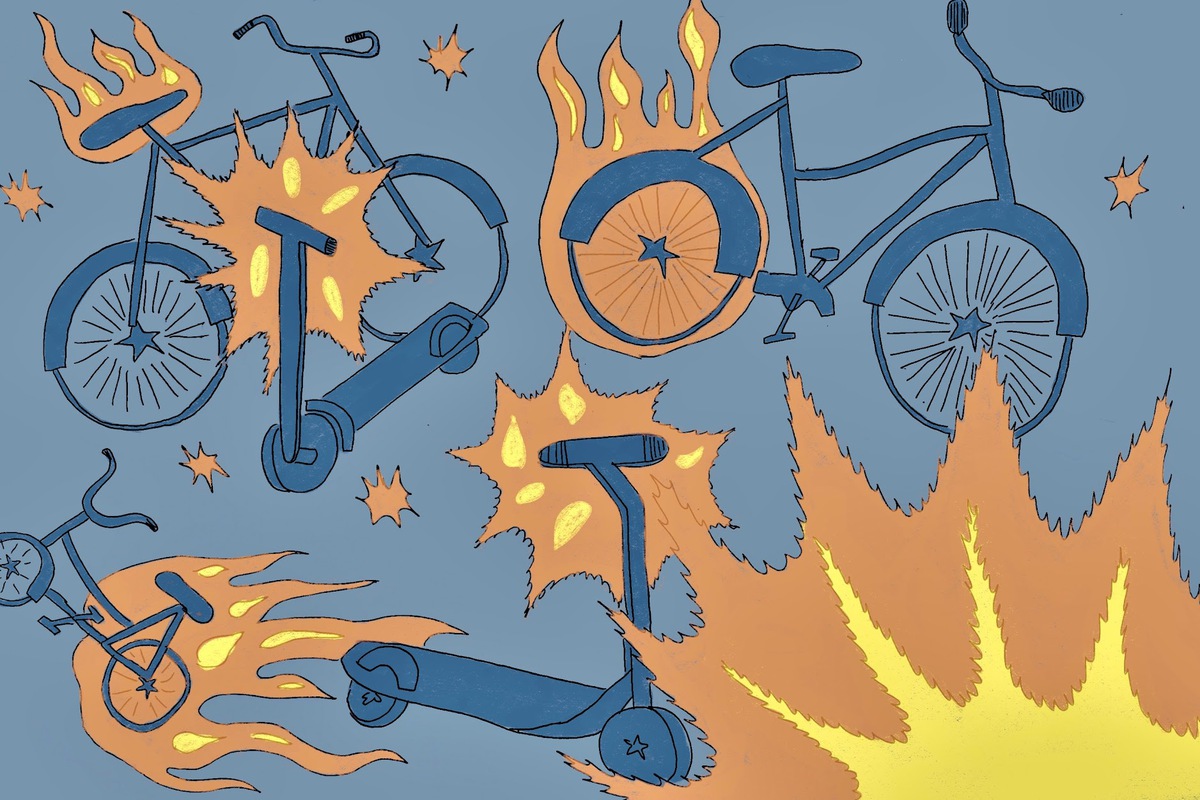With the nationwide rise of name brands like Lime and Bird, electric scooters have solidified their place on practically every corner of the UT campus. They’re everything that students could wish for in transportation: efficient, fast, low-cost and fun to ride, which amplifies their prominence within campus culture. However, with an increased speed capacity comes increased risk, which has led to a rise in student injuries caused by electric scooters.
Speedway is designated as a pedestrian priority area. The University took up the project to reconstruct the street to a pedestrian mall, which restricted transport to human-powered modes like walking or biking. While this project has been successful in certain aspects of prioritizing student safety, the introduction of electric scooters onto this area has given rise to similar issues of motorized transport as before the renovation. UT must pivot toward prioritizing student safety by instituting speed limits and enforcing the guidelines set in place for scooter conduct.
UT Parking and Transportation Services addresses these concerns with rules detailing how scooters should be operated around campus. However, these regulations are vague and don’t define what is considered “reckless” behavior in how they operate.
Additionally, the means of enforcement of these guidelines are either seemingly non-existent or ineffective – users every day are able to travel up to 15 MPH on electric scooters and weave recklessly between students. As a result, those who use electric scooters often injure themselves and others by running into pedestrians at high speeds, which has caused many students anxiety on their daily commutes to class.
Parking and Transportation Services and UTPD did not respond for a request to comment.
Biology freshman Sophia Alcantara discusses her concerns regarding her safety on Speedway following her personal encounter with being hit by a scooter.
“I got swiped in the ankle by a scooter … (and) I feel like it’s very unsafe to have the scooters on Speedway because they just weave through everyone,” Alcantara said. “If there was a speed max limit on the scooters that could help if there is an injury (because) it wouldn’t be (as) bad.”
Establishing a speed limit for scooters on Speedway and increasing awareness about safe scooter conduct could increase the likelihood for people to follow the rules and significantly reduce the frequent unsafe usage that exists today. Additionally, other solutions such as installing speed bumps or intermittently stationing UTPD officers on Speedway could be surefire ways to quench student concerns for their safety and promote an environment of cautious scooter usage.
Radio-television-film sophomore Harper Wells believes that scooters should take on more regulations and that enforcement of scooter guidelines should mirror that of campus parking guidelines.
“I’ve never seen somebody get in trouble … (because) they don’t care about the scooters,” Wells said. “If they can enforce parking, they can enforce the scooter (guidelines).”
The rules and regulations are in place, yet scooter users get away with breaking them on a daily basis. If the student body can push for greater enforcement, scooters and pedestrians would be able to coexist without risk.
Electric scooters may be here to stay, but putting student safety first must be the number one priority on campus. With greater regulation and the introduction of new tactics to enforce scooter conduct, students could ease the worry about being injured on their journey to class, and UT’s commitment to safety can continue to be upheld.
Herman is a Plan II and psychology freshman from Southlake, Texas.













